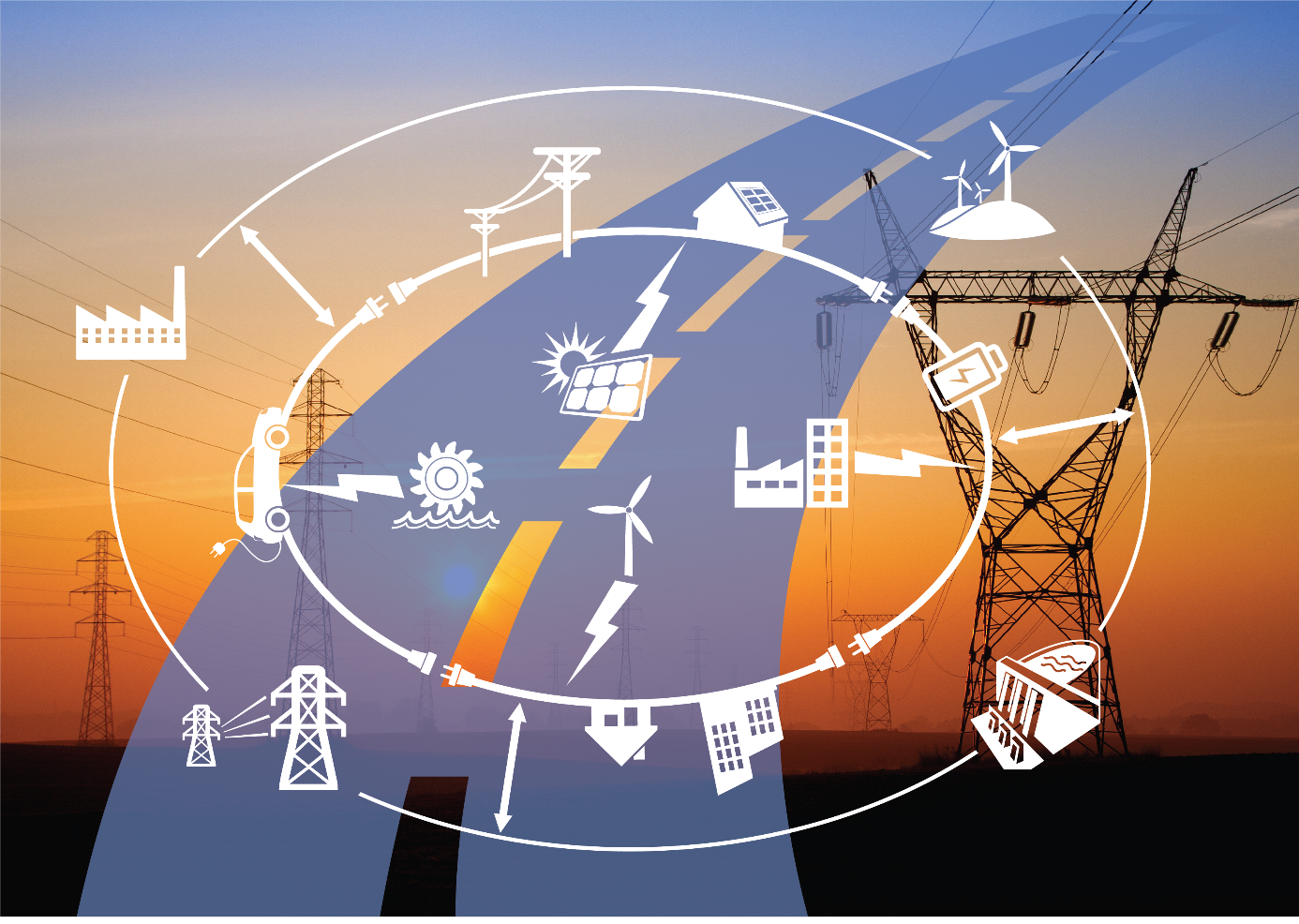
-
Table of Contents
Optimizing Energy Distribution with Edge Computing
Introduction
Edge computing is a paradigm that aims to optimize energy distribution in smart grids. It involves the deployment of computing resources and data processing capabilities closer to the edge of the network, where the energy generation, consumption, and distribution occur. By bringing computational power closer to the source of data, edge computing enables real-time analysis and decision-making, reducing latency and enhancing the efficiency of energy distribution in smart grids. This introduction provides a brief overview of the concept of edge computing and its application in optimizing energy distribution in smart grids.
Benefits of Edge Computing in Smart Grids for Energy Optimization
Edge Computing for Smart Grids: Optimizing Energy Distribution
The rapid advancement of technology has revolutionized the way we live, work, and consume energy. As our energy needs continue to grow, so does the complexity of managing and distributing it efficiently. This is where edge computing comes into play, offering a solution that can optimize energy distribution in smart grids.
One of the key benefits of edge computing in smart grids is its ability to reduce latency. In traditional cloud computing models, data is sent to a centralized server for processing, which can result in delays. However, with edge computing, data processing is done closer to the source, at the edge of the network. This significantly reduces the time it takes for data to travel, enabling real-time decision-making and faster response times.
Another advantage of edge computing in smart grids is its ability to handle large volumes of data. Smart grids generate massive amounts of data from various sources, such as smart meters, sensors, and IoT devices. Processing this data in real-time is crucial for optimizing energy distribution and ensuring grid stability. Edge computing allows for distributed processing, where data is processed locally at the edge devices, reducing the burden on the central infrastructure.
Furthermore, edge computing enhances the reliability and resilience of smart grids. By distributing processing power and decision-making capabilities across the network, edge computing reduces the risk of single points of failure. In the event of a network outage or disruption, edge devices can continue to operate autonomously, ensuring uninterrupted energy distribution. This resilience is particularly important in critical infrastructure, where even a momentary power outage can have severe consequences.
In addition to improving reliability, edge computing also enhances security in smart grids. With the increasing number of connected devices and the growing threat of cyberattacks, securing the grid infrastructure is of utmost importance. Edge computing allows for localized security measures, such as encryption and authentication, to be implemented at the edge devices. This reduces the attack surface and minimizes the impact of potential breaches, safeguarding the integrity and confidentiality of the grid data.
Moreover, edge computing enables intelligent energy management in smart grids. By processing data at the edge, near the point of consumption, edge devices can analyze real-time energy usage patterns and make intelligent decisions. This enables dynamic load balancing, where energy can be distributed efficiently based on demand and availability. For example, during peak hours, edge devices can prioritize energy distribution to critical infrastructure or adjust energy prices to incentivize consumers to reduce their consumption.
Lastly, edge computing facilitates the integration of renewable energy sources into the grid. As the world shifts towards a more sustainable future, renewable energy generation is on the rise. However, renewable energy sources are often intermittent and decentralized, posing challenges for grid operators. Edge computing can help address these challenges by enabling localized energy management and optimization. By processing data at the edge, renewable energy generation can be matched with local demand, reducing the need for long-distance transmission and minimizing energy losses.
In conclusion, edge computing offers numerous benefits for optimizing energy distribution in smart grids. From reducing latency and handling large volumes of data to enhancing reliability, security, and intelligent energy management, edge computing is a game-changer for the energy sector. As our energy needs continue to evolve, embracing edge computing will be crucial in building a more efficient, resilient, and sustainable energy infrastructure.
Implementing Edge Computing for Efficient Energy Distribution in Smart Grids
Implementing Edge Computing for Efficient Energy Distribution in Smart Grids
Edge computing has emerged as a promising solution for optimizing energy distribution in smart grids. As the demand for electricity continues to rise, traditional centralized systems are struggling to keep up with the increasing complexity and volume of data. By bringing computing power closer to the edge of the network, edge computing offers a more efficient and reliable way to manage energy distribution.
One of the key advantages of edge computing in smart grids is its ability to process data in real-time. In a traditional centralized system, data from various sensors and devices is sent to a central server for processing. This can result in delays and latency issues, which can be detrimental in a fast-paced environment like energy distribution. With edge computing, data is processed locally, at the edge of the network, reducing the time it takes to analyze and act upon the data.
Another benefit of edge computing is its ability to handle large volumes of data. Smart grids generate massive amounts of data from sensors, meters, and other devices. Centralized systems often struggle to handle this data influx, leading to bottlenecks and inefficiencies. Edge computing, on the other hand, allows for distributed processing, where data is processed at multiple points in the network. This not only reduces the burden on the central server but also improves the overall performance and scalability of the system.
Furthermore, edge computing enables real-time decision-making at the edge of the network. In a smart grid, quick decision-making is crucial to ensure efficient energy distribution and prevent power outages. By processing data locally, edge computing enables faster response times and reduces the reliance on a centralized decision-making process. This decentralized approach allows for more agile and adaptive energy distribution, ensuring that power is delivered where it is needed most.
In addition to its real-time capabilities, edge computing also enhances the security and reliability of smart grids. With a centralized system, a single point of failure can have catastrophic consequences. Edge computing, on the other hand, distributes the processing and storage of data across multiple edge devices, reducing the risk of a complete system failure. This decentralized architecture also makes it harder for hackers to compromise the entire system, as they would need to breach multiple edge devices instead of a single central server.
Implementing edge computing in smart grids does come with its challenges. One of the main challenges is the need for a robust and reliable network infrastructure. Edge devices rely on a strong network connection to communicate with each other and the central server. Any network disruptions or latency issues can impact the performance and reliability of the system. Therefore, it is crucial to invest in a resilient network infrastructure to support the implementation of edge computing in smart grids.
In conclusion, edge computing offers significant advantages for optimizing energy distribution in smart grids. Its real-time processing capabilities, ability to handle large volumes of data, and decentralized decision-making make it a valuable tool in ensuring efficient and reliable energy distribution. However, the successful implementation of edge computing in smart grids requires a robust network infrastructure and careful consideration of security measures. With the right infrastructure and planning, edge computing has the potential to revolutionize the way we manage and distribute energy in the future.
Challenges and Solutions in Edge Computing for Smart Grids’ Energy Distribution
Edge Computing for Smart Grids: Optimizing Energy Distribution
The rapid advancement of technology has revolutionized the way we live, work, and consume energy. As our world becomes increasingly interconnected, the demand for efficient and reliable energy distribution has never been greater. This is where edge computing comes into play, offering a solution to the challenges faced by smart grids in optimizing energy distribution.
One of the key challenges in energy distribution is the sheer volume of data generated by smart grids. With millions of devices and sensors collecting data in real-time, the traditional centralized cloud computing model struggles to handle the massive influx of information. This is where edge computing steps in, by bringing computation and data storage closer to the source of data generation.
By processing data at the edge of the network, edge computing reduces latency and improves response times. This is crucial in the context of smart grids, where real-time decision-making is essential for efficient energy distribution. With edge computing, data can be analyzed and acted upon locally, without the need to send it back to a centralized cloud server. This not only reduces network congestion but also enhances the overall reliability of the system.
However, implementing edge computing in smart grids is not without its challenges. One of the main concerns is the security and privacy of data. With data being processed and stored at the edge, there is a need for robust security measures to protect against potential cyber threats. Encryption, authentication, and access control mechanisms must be implemented to ensure the integrity and confidentiality of data.
Another challenge is the heterogeneity of devices and systems within smart grids. Different devices may have varying computational capabilities and storage capacities. This requires careful resource allocation and management to ensure optimal performance. Edge computing solutions must be flexible enough to accommodate the diverse range of devices and systems present in smart grids.
Furthermore, the scalability of edge computing systems is a critical factor to consider. As the number of devices and sensors in smart grids continues to grow, the edge computing infrastructure must be able to handle the increasing workload. This requires a scalable architecture that can dynamically allocate resources based on demand. Additionally, edge computing systems must be able to seamlessly integrate with existing infrastructure and legacy systems, without disrupting the overall operation of the smart grid.
To address these challenges, several solutions have been proposed. One approach is the use of machine learning algorithms to optimize resource allocation and management in edge computing systems. By analyzing historical data and predicting future demand, machine learning algorithms can dynamically allocate resources to ensure optimal performance and scalability.
Another solution is the use of blockchain technology to enhance the security and privacy of data in edge computing systems. By leveraging the decentralized nature of blockchain, data can be securely stored and accessed by authorized parties only. This eliminates the need for a centralized authority and reduces the risk of data breaches.
In conclusion, edge computing offers a promising solution to the challenges faced by smart grids in optimizing energy distribution. By bringing computation and data storage closer to the source of data generation, edge computing reduces latency, improves response times, and enhances the overall reliability of the system. However, the implementation of edge computing in smart grids requires careful consideration of security, scalability, and resource management. With the right solutions in place, edge computing has the potential to revolutionize the way we distribute and consume energy, paving the way for a more sustainable and efficient future.
Conclusion
In conclusion, edge computing plays a crucial role in optimizing energy distribution in smart grids. By bringing computational power closer to the edge devices and sensors, it enables real-time data processing, analysis, and decision-making. This allows for efficient energy management, improved grid reliability, reduced latency, and enhanced security. Edge computing also enables the integration of renewable energy sources and facilitates demand response programs. Overall, the adoption of edge computing in smart grids holds great potential for optimizing energy distribution and advancing the transition towards a more sustainable and resilient energy system.




